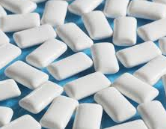
23 May Xylitol Chewing Gums and Caries Rates: A 40-month Cohort Study
Mäkinen KK1, Bennett CA, Hujoel PP, Isokangas PJ, Isotupa KP, Pape HR Jr, Mäkinen PL.
Abstract
Dental caries is a pandemic infectious disease which can affect the quality of life and consumes considerable health care resources. The chewing of xylitol, sorbitol, and even sugar gum has been suggested to reduce caries rates. No clinical study has simultaneously investigated the effectiveness of these gums when compared with a group receiving no chewing gum.
A 40-month double-blind cohort study on the relationship between the use of chewing gum and dental caries was performed in 1989-1993 in Belize, Central America. One thousand two hundred and seventy-seven subjects (mean age, 10.2 years) were assigned to nine treatment groups: one control group (no supervised gum use), four xylitol groups (range of supervised xylitol consumption: 4.3 to 9.0 g/day), two xylitol-sorbitol groups (range of supervised consumption of total polyols: 8.0 to 9.7 g/day), one sorbitol group (supervised consumption: 9.0 g/day).
The gum use during school hours was supervised. Four calibrated dentists performed the caries registrations by means of a modified WHO procedure. The primary endpoint was the development of an unequivocal caries lesion on a non-cavitated tooth surface. Compared with the no-gum group, sucrose gum usage resulted in a marginal increase in the caries rate (relative risk, 1.20; 95% confidence interval,0.96 to 1.49; p = 0.1128). Sorbitol gum significantly reduced caries rates (relative risk 0.74; 95% confidence interval, 0.6 to 0.92 ; p = 0.0074).
The four xylitol gums were most effective in reducing caries rates, the most effective agent being a 100% xylitol pellet gum (relative risk, 0.27; 95% confidence interval, 0.20 to 0.36; p = 0.0001). This gum was superior to any other gum (p < 0.01). The xylitol-sorbitol mixtures were less effective than xylitol, but they reduced caries rates significantly compared with the no-gum group. DMFS analyses were consistent with these conclusions. The results suggest that systematic usage of polyol-based chewing gums reduces caries rates in young subjects, with xylitol gums being more effective than sorbitol gums.
Sorry, the comment form is closed at this time.